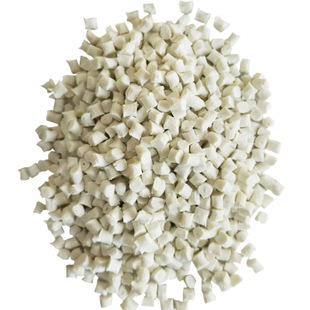What are the properties of PBT engineering plastics
Performance analysis of engineering plastics PBT
Polybutylene terephthalate (PBT)
Polybutylene terephthalate (PBT) is a crystalline thermoplastic engineering plastic formed by the polymerization of dimethyl terephthalate (DMT) and 1,4-butanediol. Because the - CH2 - chain of PBT resin grows, the molecular chain is easy to bend. Therefore, the glass transfer temperature is lower than that of pet, and the crystallization speed is faster. Its chemical structure formula is as follows
PBT was successfully researched by Celanese company of the United States in the early 1970s, and was listed under the trade name Celanese. Subsequently, international well-known manufacturers BASF, Bayer, GE and Ticona of the United States, Toray and Mitsubishi Chemical of Japan, Shin Kong synthetic fiber of Taiwan, Changchun artificial resin, Nanya plastics and other companies successively put into production teams, with a total of more than 30 global manufacturers.
PBT can also be called thermoplastic polyester plastic. In order to be applicable to different processing industries, generally, it will be added with additives or mixed with other plastics. With different proportions of additives, products of different standards can be made. Because PBT has heat resistance, weather resistance, drug resistance, good electrical properties, low water absorption and excellent gloss, it is widely used in electronic appliances, car parts, machinery, household products, etc. PBT products, together with PPE, PC, POM, PA, etc., are called the five general-purpose engineering plastics.
The associated industries used in the downstream of PBT include cars, electronics / electrical appliances and machinery:
Adaptor
The adapter is a bridge between signals and an indispensable component for the transmission of electronic signals and power connection. The balanced physical properties and price of PBT are in line with the needs of the adapter. PBT is usually added with 30% glass fiber as the adapter. PBT is widely used because of its mechanical properties, solvent resistance, good formability and low price. PBT can not be used in SMT adapter due to poor heat resistance of welding plutonium.

Radiator fan
The second major use of PBT is to use it in the heat dissipation fan. The heat dissipation fan is placed in the machine for long-term rotation to help heat dissipation. The physical properties of plastic are required to have heat resistance, flame resistance, insulation and mechanical strength. PBT is usually used as the outer frame and blade of the heat dissipation fan in the form of 30% fiber addition
Bobbin
The third use of PBT is as the winding shaft in transformers and relays, which is generally formed by 30% injection of PBT plus fiber. The physical properties required for the winding shaft include insulation, heat resistance, welding resistance, fluidity, strength, etc. the applicable data include phenolic resin, PBT, PA6, pet.
Phenolic resin has good properties, but its formability is not as good as PBT. Therefore, PBT resin is used for products with small scale and disordered shape. Although PBT welding plutonium has poor heat resistance, it has a trend to increase the use of recyclable PBT in Europe, America, Japan and other countries with high awareness of environmental protection.
Car industry
About 2200 metric tons of PBT are consumed in the car industry, half of which form pbt/pc alloy with PC and can be used as car bumper. In addition, PBT can also be used for window motor housing, locomotive motor parts, car driver gear box, etc.
Others
Other uses of PBT, such as adding 15% glass fiber as the inner base and shell of the bulb base, using pbt/pc composite as the sole of skates, and others such as relay shell, socket, switch and tuner shell.
Article source: PBT engineering plastics http://www.wywantong.com/
-
04-13
PVC Engineering Plastics: how PVC plastic pipes are formed
The forming process of PVC plastic pipes should start from the raw materials of PVC plastic granules, which can be divided into soft PVC and hard PVC according to the added amount of stabilizer, plast
-
11-12
What is the filling property of Jiangmen engineering plastics
What is the filling property of Jiangmen engineering plasticsIn recent years, PC modified plastics have developed rapidly in China, and its industrial system is gradually established and improved. Th
-
10-08
Jiangmen Engineering Plastics: how to classify Jiangmen engineering plastics?
How to classify Jiangmen engineering plastics? 1. Classification by application characteristicsAccording to the different application characteristics of famous plastics, plastics are usually divided
-
08-30
Application scope of PBT engineering plastics
PBT engineering plastics are widely used in electronics, car industry, office machinery and other fields. In Japan and the developed countries in Europe, PBT engineering plastics are mainly used in t